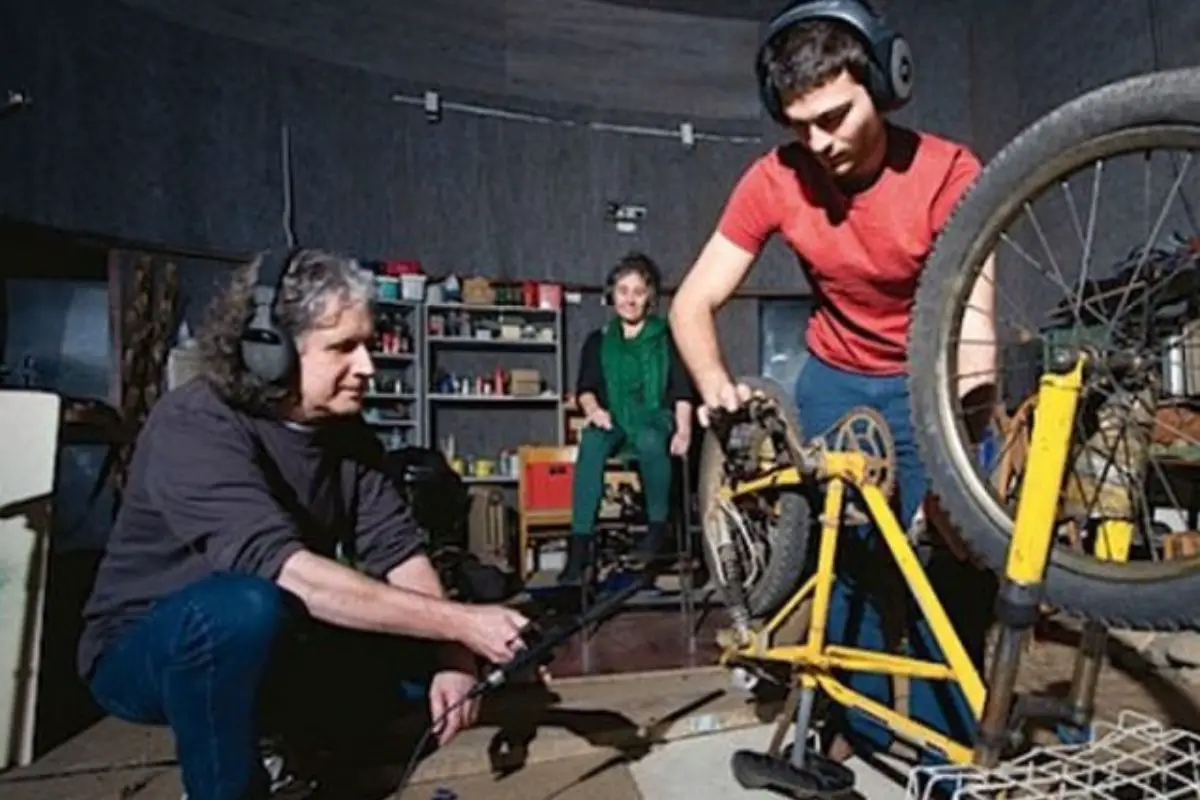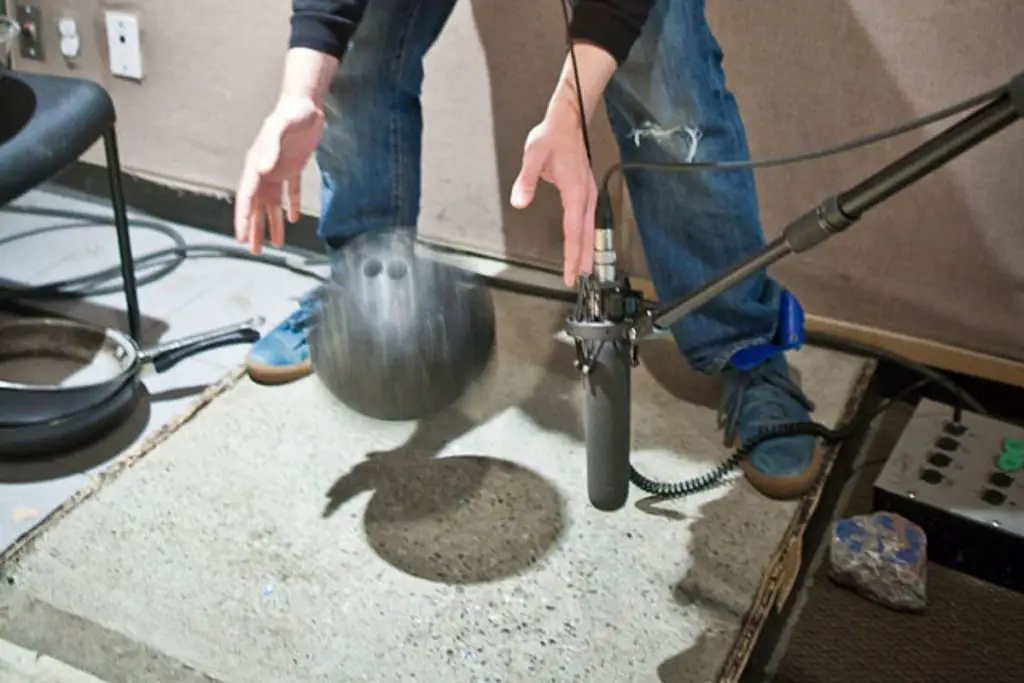Get ready to embark on a sonic adventure that will leave you wondering why you haven’t explored the magical world of Foley sooner. In the thrilling and often mysterious universe of audio, Foley remains an unsung hero, cloaked in invisibility yet ubiquitous in its presence. What is Foley in audio, you ask?
In this fascinating deep dive, we’ll walk you through the history, origins, and purpose of Foley and how it stands apart from other types of sound effects. And if you’re an aspiring Foley enthusiast, don’t worry – we’ve got you covered with resources, tips, and a beginner’s guide to kickstart your journey into the enchanting realm of Foley audio.
What is Foley in audio? Foley is the art of creating and recording custom sound effects for movies and TV shows, typically performed by specialized artists who use a range of props and techniques to mimic sounds such as footsteps, clothing movement, and object interactions. These sounds add depth and realism to the visual medium, enhancing the overall viewing experience.
What is the origin and purpose of Foley in audio?
The origin and purpose of Foley in audio can be traced back to its namesake, Jack Foley, a pioneer in the film industry during the early days of cinema. Foley refers to the art of creating and recording custom sound effects for movies and TV shows, which are typically performed by specialized artists known as Foley artists.

These artists use various props and techniques to mimic organic, human-made sounds such as footsteps, clothing rustling, and object interactions, ultimately enhancing the realism and overall viewing experience of the visual medium. The role of Foley artists in the film industry is crucial, as they breathe life into scenes and add depth to the on-screen action, making it more immersive for the audience.
Foley plays a vital role in audio production, ensuring a rich and immersive audio landscape that complements the visuals, elevates storytelling, and enhances the overall viewing experience for audiences. There are several purposes of Foley in audio:
1. Realistic sound effects
Foley provides realistic, custom-made sound effects that synchronize with and complement the visuals in movies, TV shows, and other forms of visual media. Foley focuses on capturing the subtleties of everyday sounds that might not be picked up by microphones during filming or are impractical to record on set.
These sounds include footsteps, rustling clothing, creaking doors, or the clinking of glasses, among many others. By carefully matching these sounds with the visuals, Foley artists help create a seamless and believable audio experience for the audience.
…a dramatic scene might be accentuated with amplified Foley sounds, drawing the viewer’s attention to specific details and enhancing the emotional impact.
2. Emphasize actions and emotions
Another purpose of Foley is to emphasize certain actions, emotions, or story elements. For example, a dramatic scene might be accentuated with amplified Foley sounds, drawing the viewer’s attention to specific details and enhancing the emotional impact.
3. Ability to edit audio independently
Foley also provides filmmakers with the flexibility to edit and modify the audio independently of the visuals. This enables them to make adjustments as needed, to either emphasize or downplay certain sounds for artistic or storytelling purposes.
AKAI Professional MPK Mini MK3

AKAI Professional MPK Mini MK3
Three types of Foley sound
Foley sound are classified into three types:
1. Footsteps
Because they are more difficult to correctly capture when shooting a scene, the sound of footsteps is the most common production sound a foley artist makes. Foley recording studios contain a wide range of shoes and floor surfaces, allowing artists to reproduce steps from practically any shoe on any surface.
2. Movement
A subtle sound effect that improves a scene is the sound of movement, such as two people brushing past one other.
3. Specifics
Specifics are sounds that do not originate from movement or footsteps, such as a phone ringing or a door creaking.
Advantages and disadvantages of Foley in audio
Foley artists use a variety of objects and techniques to produce sounds that synchronize with the visuals on the screen. While Foley can greatly enhance the audio quality, it also has its own set of advantages and disadvantages to consider.
Advantages
Foley offers several advantages that contribute to the overall audio experience:
- Enhanced Realism: Foley allows for the creation of custom sounds that closely match the actions on-screen, resulting in a heightened sense of realism. Whether it’s footsteps, door creaks, or the rustling of clothing, foley can make the scene feel more authentic.
- Creative Freedom: Foley artists have the freedom to experiment and craft unique sounds tailored to specific scenes. This creative process adds a personal touch and can help evoke the desired emotions from the audience.
- Controlled Sound: By recording Foley sounds separately from the original production audio, sound engineers gain more control over the final mix. They can adjust the volume, timing, and placement of foley sounds to ensure they blend harmoniously with dialogue and music.
- Immersive Experience: Foley plays a crucial role in creating a captivating audio experience. By adding layers of detail to the sound design, foley can transport viewers into the world of the story, making it more engaging and immersive.
- Artistic Collaboration: Foley production involves close collaboration between Foley artists, sound designers, and filmmakers. This collaborative process fosters a synergy that enhances the overall quality of the audio, resulting in a more polished and professional end product.
Disadvantages
Despite its advantages, Foley in audio also has certain drawbacks that should be taken into account:
- Time and Effort: Foley production can be a time-consuming and labor-intensive process. Foley artists need to carefully coordinate their actions with the visuals, ensuring precise synchronization. This can require multiple takes and meticulous attention to detail.
- Cost Considerations: Foley production often involves acquiring or creating specialized props, recording equipment, and a dedicated recording space. These costs can add up, particularly for independent productions with limited budgets.
- Authenticity Challenges: While Foley aims to create realistic sounds, there is always the risk of the audio feeling artificial or not matching the visual cues perfectly. Achieving complete authenticity can be challenging, requiring skilled Foley artists and meticulous attention to detail.
- Repetitive Movements: Foley artists often need to perform repetitive movements to create specific sounds, such as footsteps or hand movements. This can put a strain on their bodies and lead to fatigue or potential injuries if not managed properly.
- Production Limitations: In some cases, the original production audio may be of such high quality that additional foley sounds are unnecessary. Additionally, certain scenes or filmmaking styles may not benefit significantly from Foley, making it a less essential component.

Techniques for recording Foley sounds
There are various techniques used by professional Foley artists to create convincing and immersive sound effects for movies and TV shows.
1. Object manipulation
Foley artists manipulate various objects to produce specific sounds. For example, an old chair can be used to create a creaking sound. By experimenting with different objects and their interactions, Foley artists can simulate a wide range of sounds.
2. Footsteps
Foley artists often recreate the sound of footsteps. They may use different types of shoes or boots on various surfaces like gravel, wood, or concrete to generate the appropriate footstep sounds. This technique involves precise synchronization of footsteps with the character’s movements on-screen.
3. Props and materials
Foley artists gather a variety of props and materials to replicate sounds in the environment. For instance, coconut shells can be used to recreate the sound of a horse walking. Other examples include using different types of cloth or leather for rustling sounds or cornstarch-filled gloves to simulate the sound of walking in the snow.
4. Surfaces and textures
Foley artists create sound textures by manipulating surfaces and materials. They may use sandpaper or various textured objects to produce sounds like scraping, sliding, or rubbing. By exploring different combinations, Foley artists can capture the desired auditory qualities for specific scenes.
5. Environmental effects
Foley artists also recreate environmental sounds to enhance the overall ambiance of a scene. This can include sounds such as wind, rain, thunder, or birdsong. They often utilize specific tools or objects that can generate these sounds convincingly.
6. Body movements
Foley artists pay close attention to the subtleties of body movements. They use techniques like cloth swishes or rubber squeaks to replicate the sound of clothing or joints moving. This attention to detail helps create a more immersive auditory experience for the audience.
Foley techniques can vary depending on the specific requirements of a project, the available resources, and the creativity of the Foley artist. The goal is to reproduce and enhance the sounds that occur naturally in a scene to create a sense of realism and engagement for the audience.
Conclusion
Well, folks, we’ve reached the end of our sonic escapade, and I hope you’re now well-versed in the art of Foley audio. Are you ready to make some noise and step into the shoes of a Foley artist yourself? Remember, practice makes perfect, so don’t be afraid to “step up” your game and dabble in the footsteps of Jack Foley (pun intended)!
So, did I hit the right notes for you? Let me know in the comments section below – I read and reply to every comment. If you found this article helpful, share it with a friend, and check out my full blog for more tips and tricks in the world of audio. Thanks for reading, and may your audio adventures be filled with sweet, sweet sounds!
Key takeaways
This article covered what foley is in audio. Here are some key takeaways:
- Foley is the art of creating custom sound effects for movies and TV shows, enhancing the viewing experience.
- The practice is named after Jack Foley, an early pioneer of sound effects in cinema.
- Foley is distinct from sound design, focusing on organic, human-made sounds.
- Foley artists use a range of props and techniques to create realistic audio.
- Anyone with an interest in audio can learn to create Foley sounds with practice and experimentation.
- Resources, tutorials, and workshops are available to help beginners get started in Foley audio.















